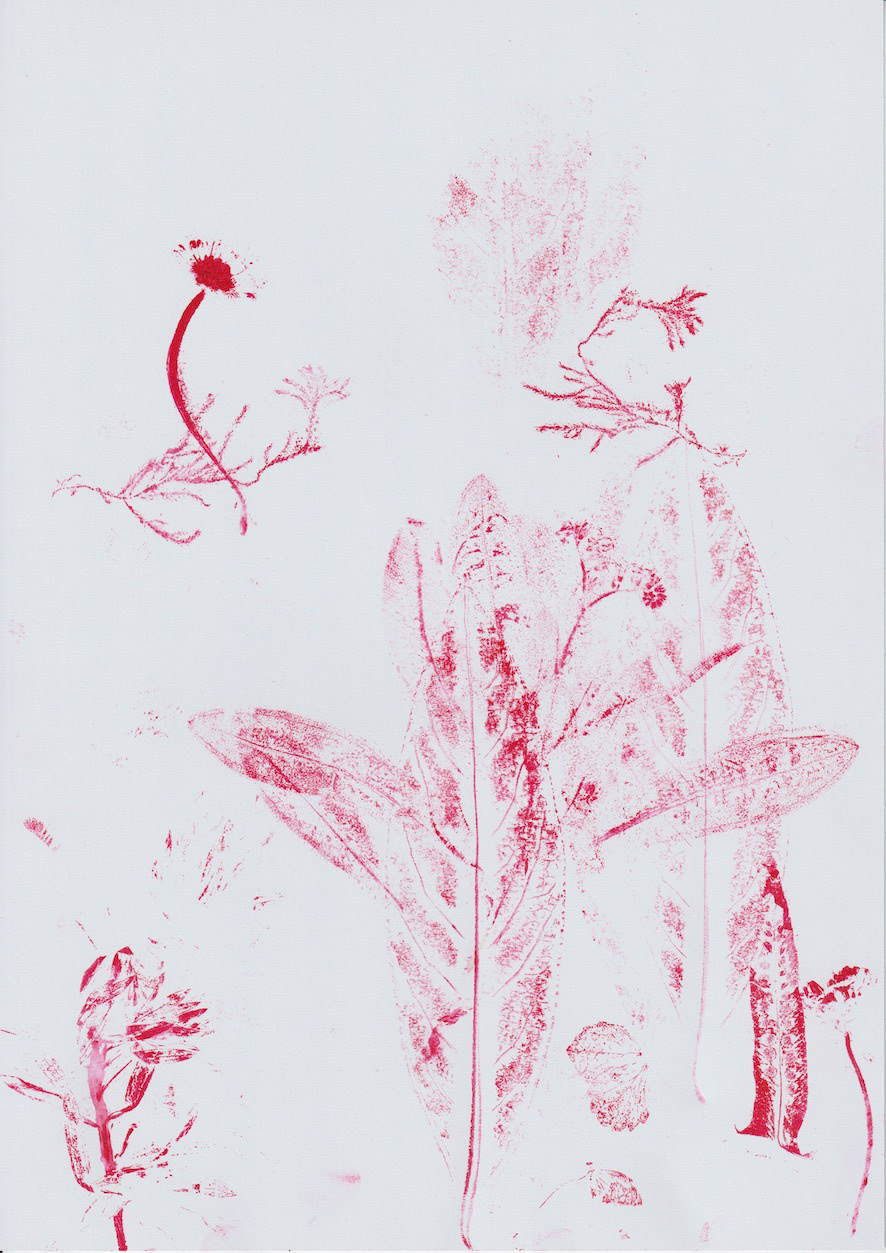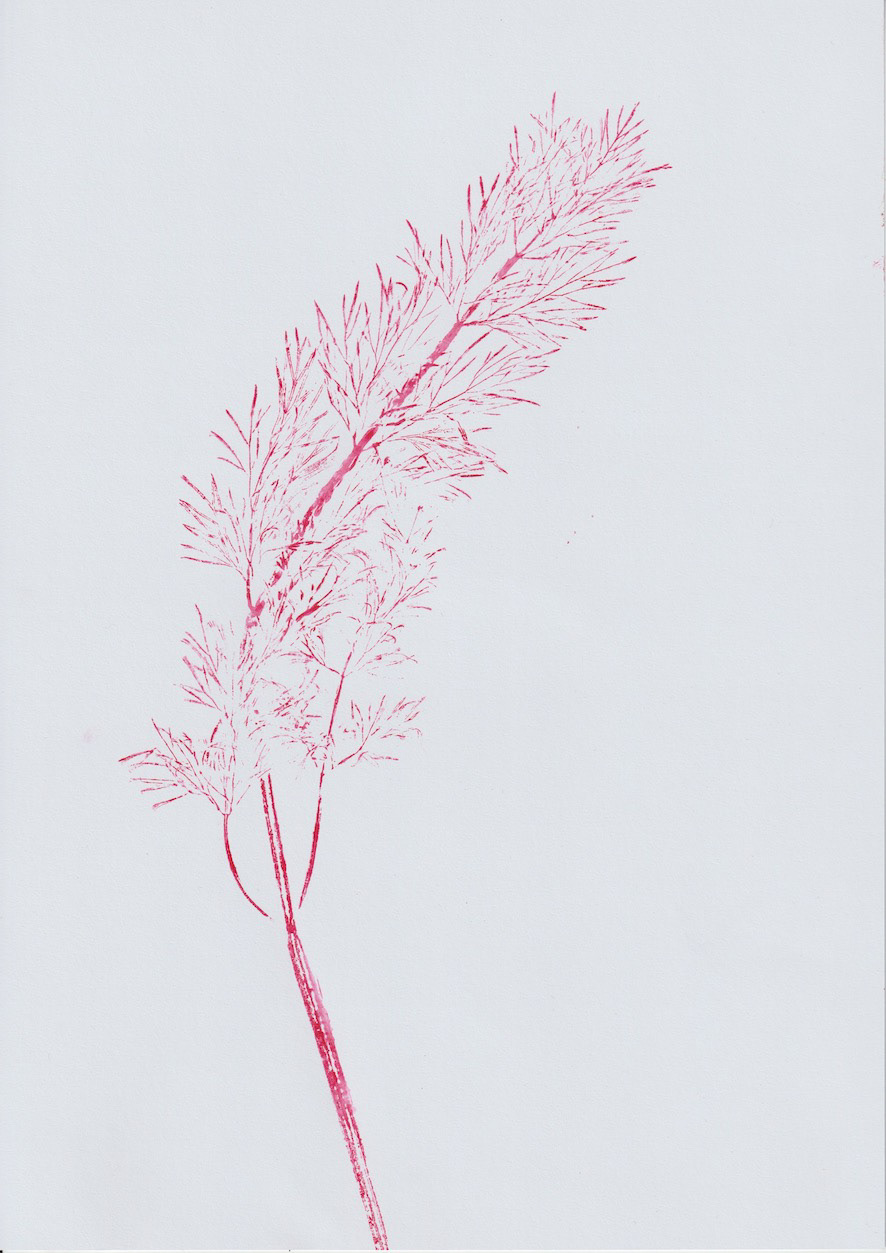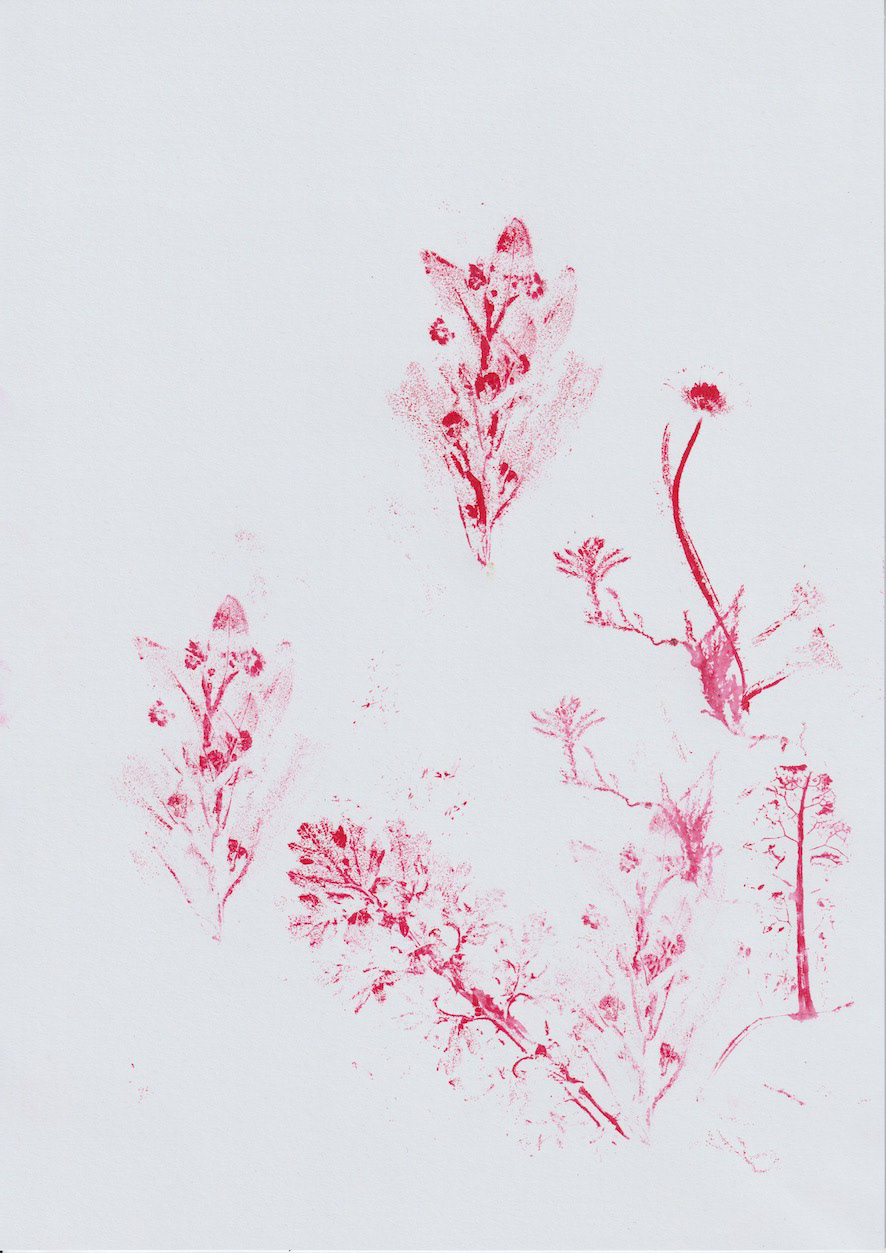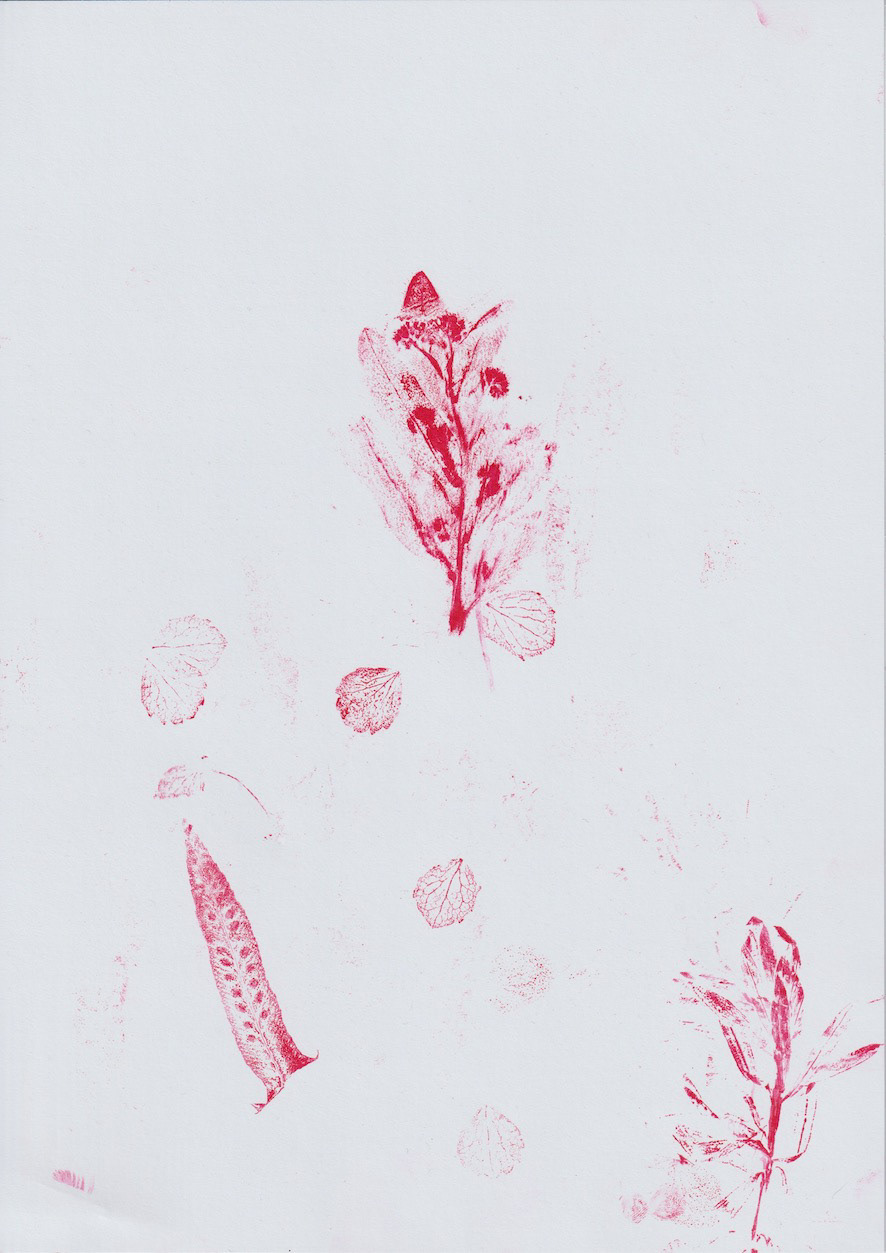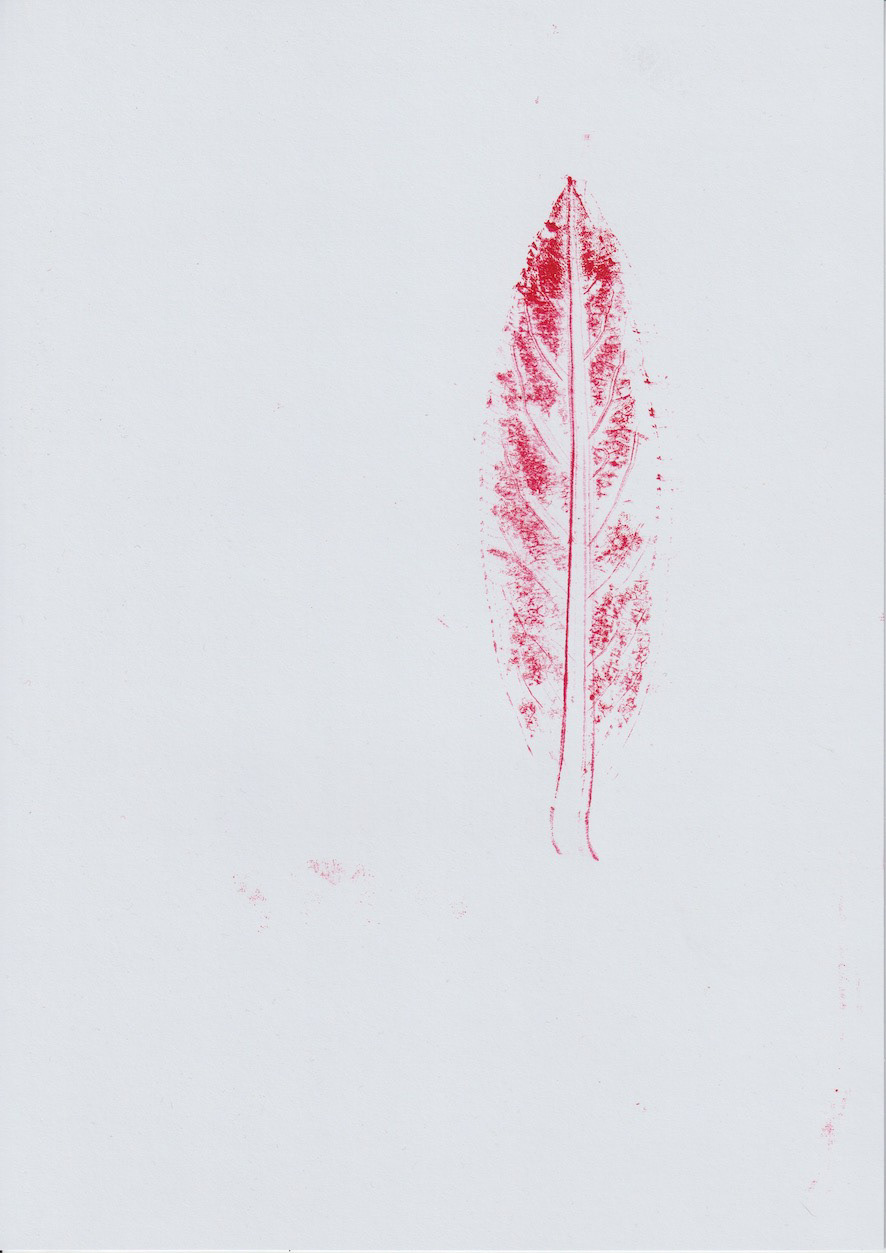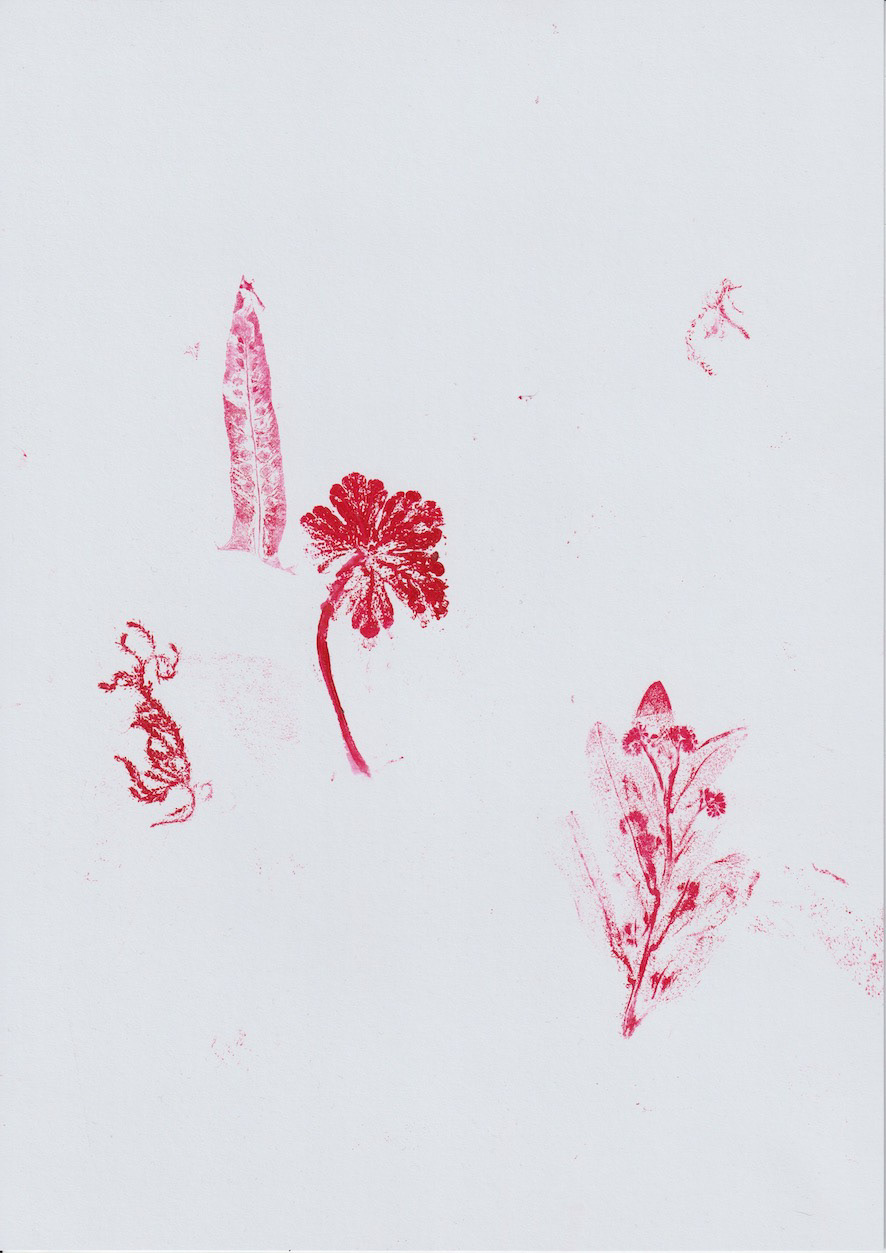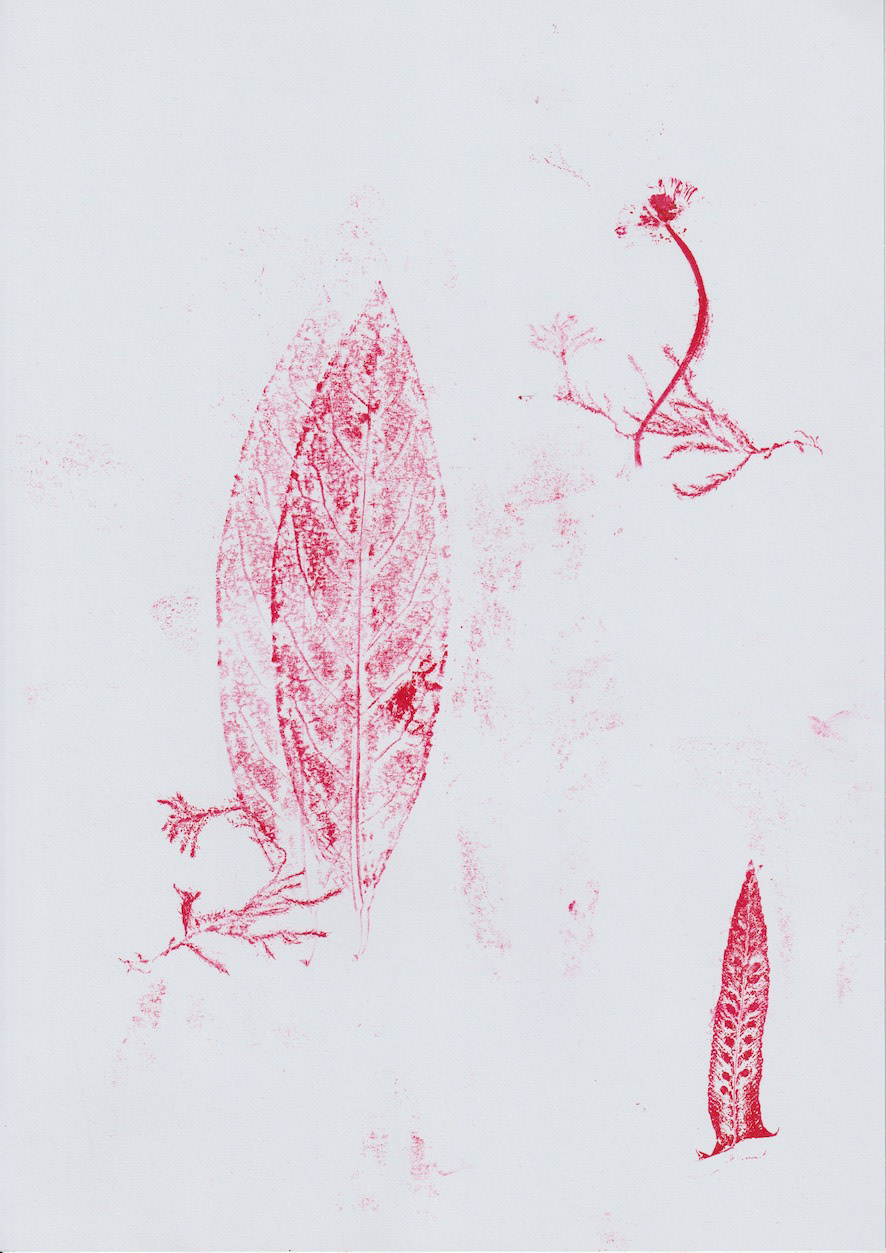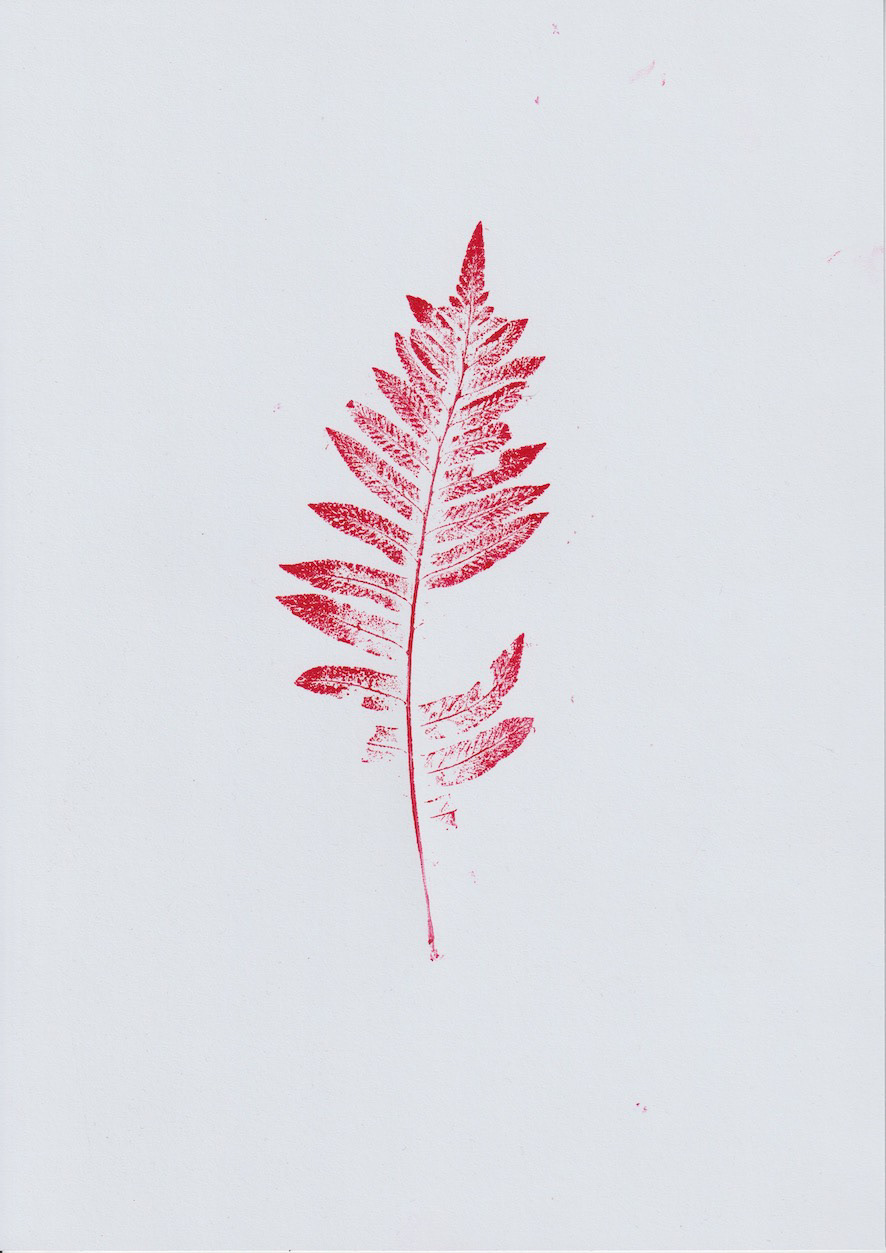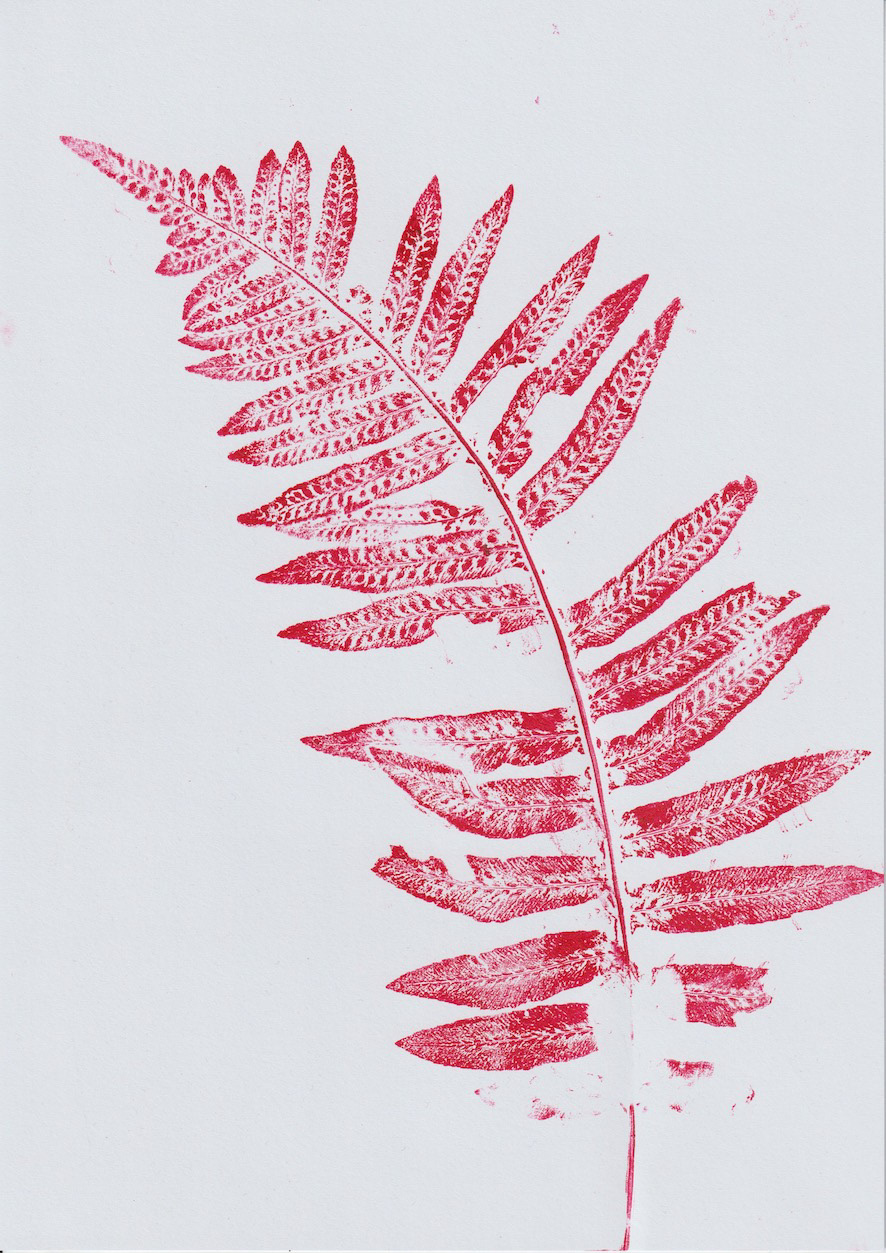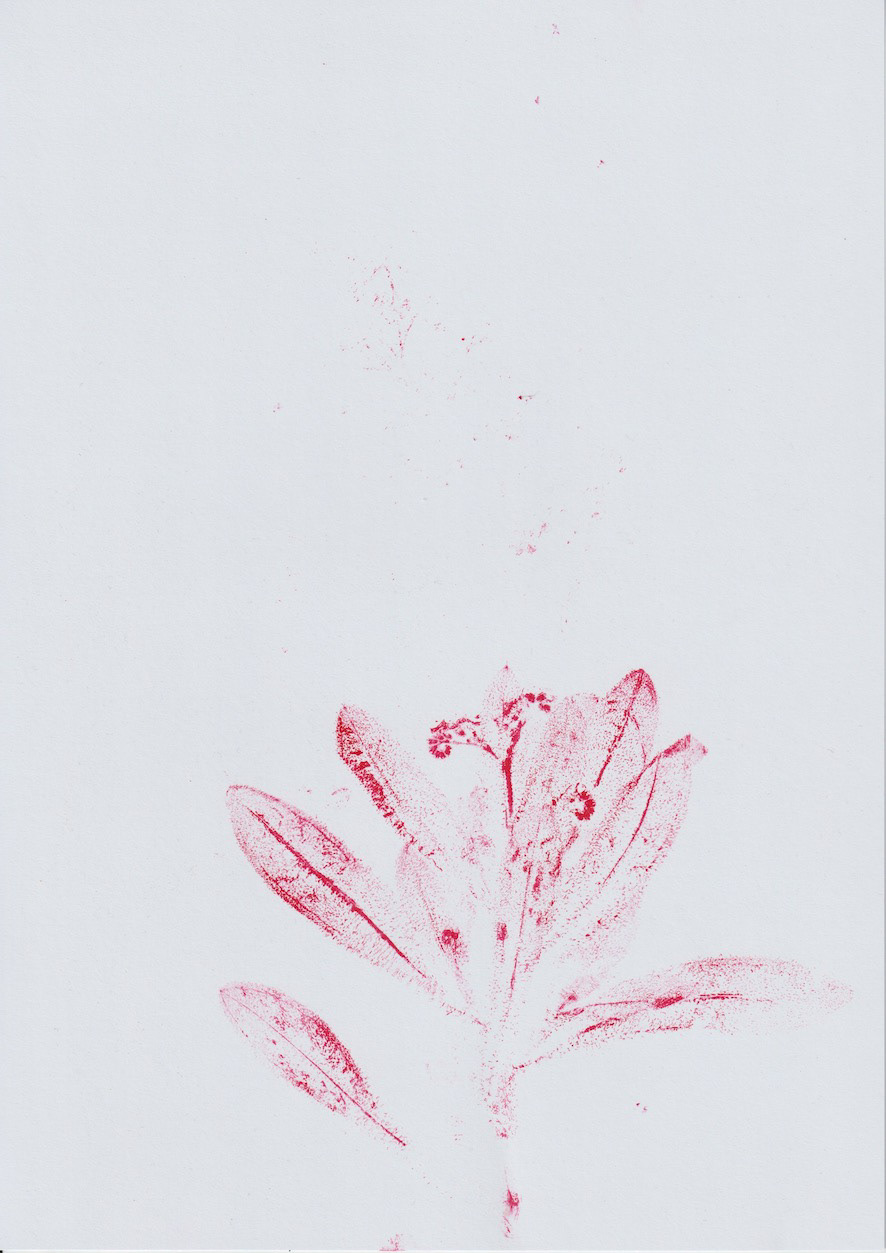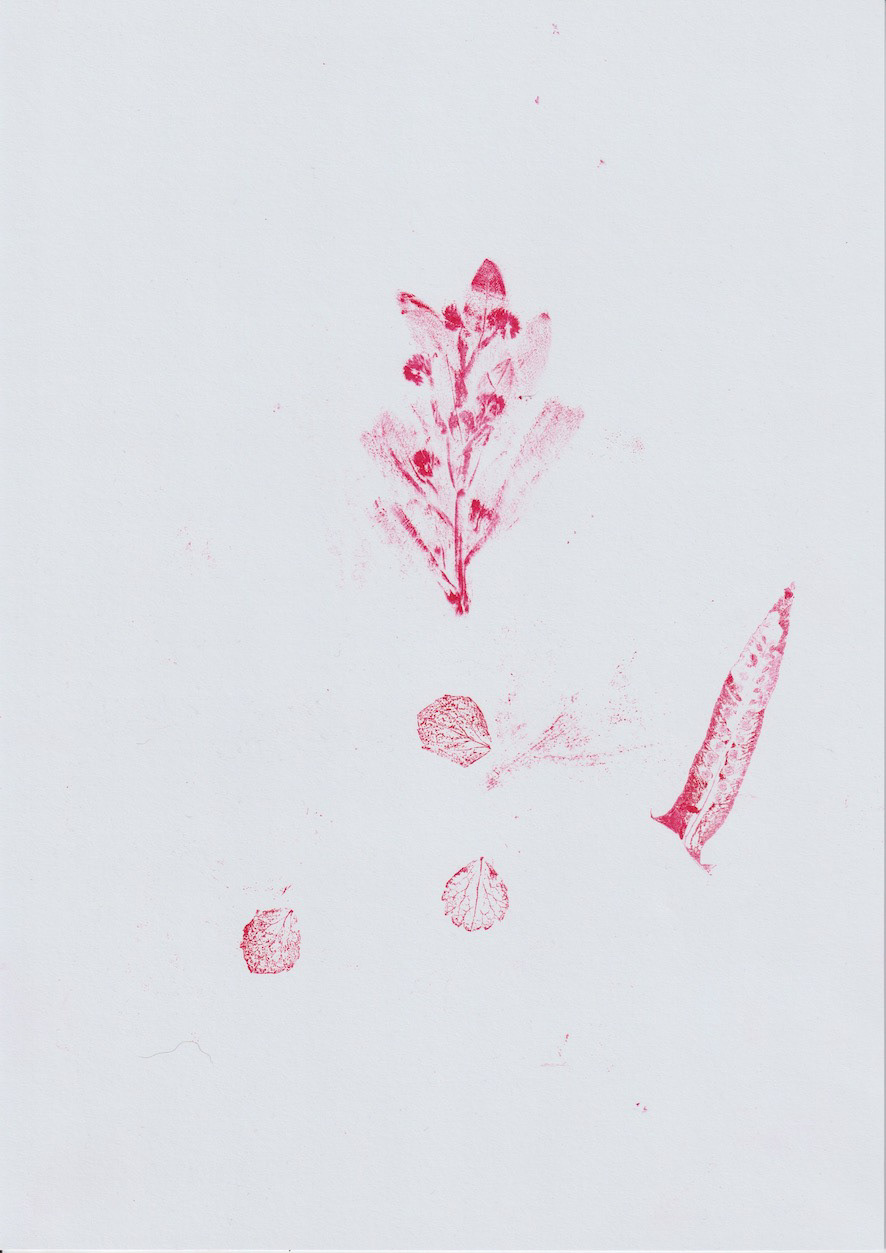PUH-POWEE! is a presentation of botanical prints by Alexa Seligman, Isabel Seligman and Xanthe Seligman Carr, comprising material prints made directly from plants, as well as nature photography and AI-generated images.
"Puhpowee" - the force which causes mushrooms to push up from the earth overnight (Robin Wall Kimmerer, 2013, translating from Potawatomi*)
In presenting PUH-POWEE! at Wild Thyme, Alexa Seligman set out to question the vitality of AI photography - the way in which it emerges, creatively, and how it can appear to be real, even beautiful.
To this end, she places works generated by AI alongside works made by hand and photography.
The material prints are created by physically crushing individual spring plants onto paper along with non-toxic inks, working in collaboration with her daughter and sister in the Oxfordshire countryside.
The AI photographs are generated by providing language prompts to US-based AI research organisation OpenAI's DALL•E 2 system, trained on hundreds of millions of captioned images harvested or 'scraped' from the internet, which outputs 'images and art'.
A single raw photograph joins the collection, taken of a slime mould in nearby Wormholt Park, which bears some resemblance to the AI mosses and lichens created by DALL•E - both visually and in its tendency for spontaneous fruiting (whether from data or from a living plasmodium).
The result is a survey of pressing forces (in every sense), and a blurring of what seems 'natural' and what does not.
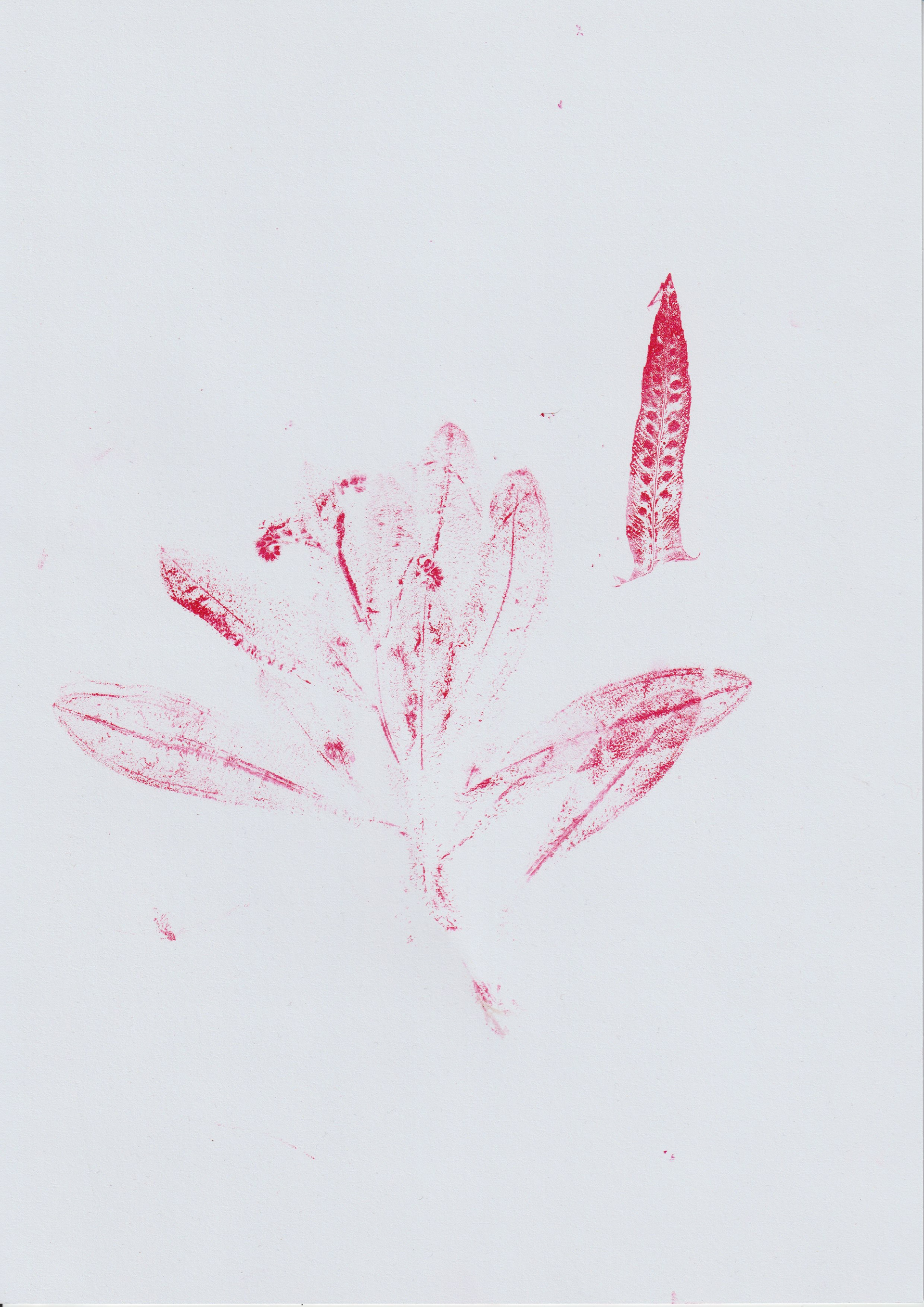

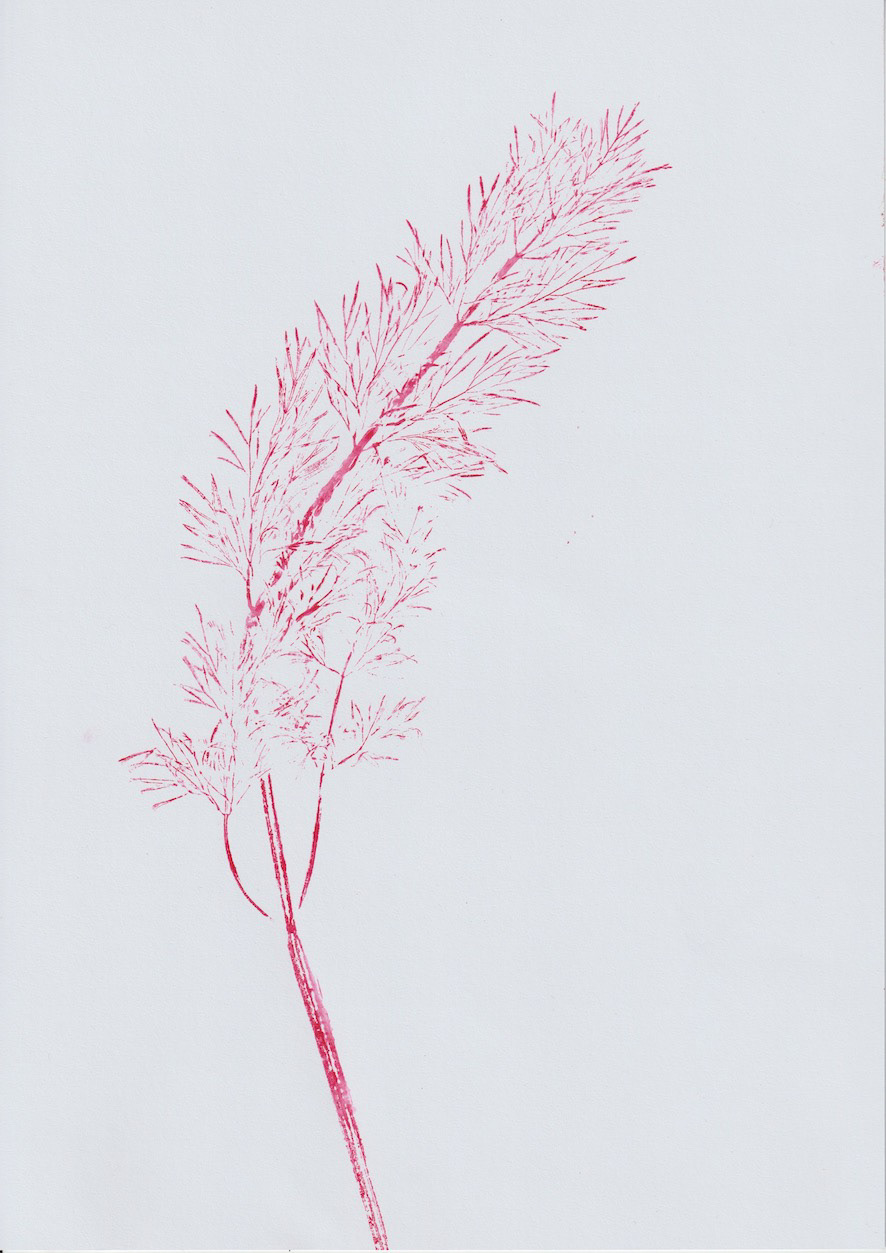
The materialism of the physical prints is emphasised, highlighting our shared, creaturely, experience of pressure, whether on the page with our hands or on the field in our footsteps. This is something no disembodied AI system will ever experience, no matter how well it represents it.
Nature's own algorithm also becomes apparent in the imprints of real plants, sometimes repeated by the artists' re-applying of ink, often self-similar by Nature's own design. We are reminded that it was Nature's algorithm, generating ever more complex life-forms from the genetic data set of existence, which gave rise to the biological output we call consciousness.
Meanwhile the AI-generated photographs also have a resonance in the natural world. Strongly reminiscent of natural forms, from sea creatures to lichen, rocks and crystals, they appear to be real partly because they are derived from photographs but also because DALL•E 2 has been specifically engineered by humans to output realistic seeming images (when compared to equivalent systems like BING and Midjourney).
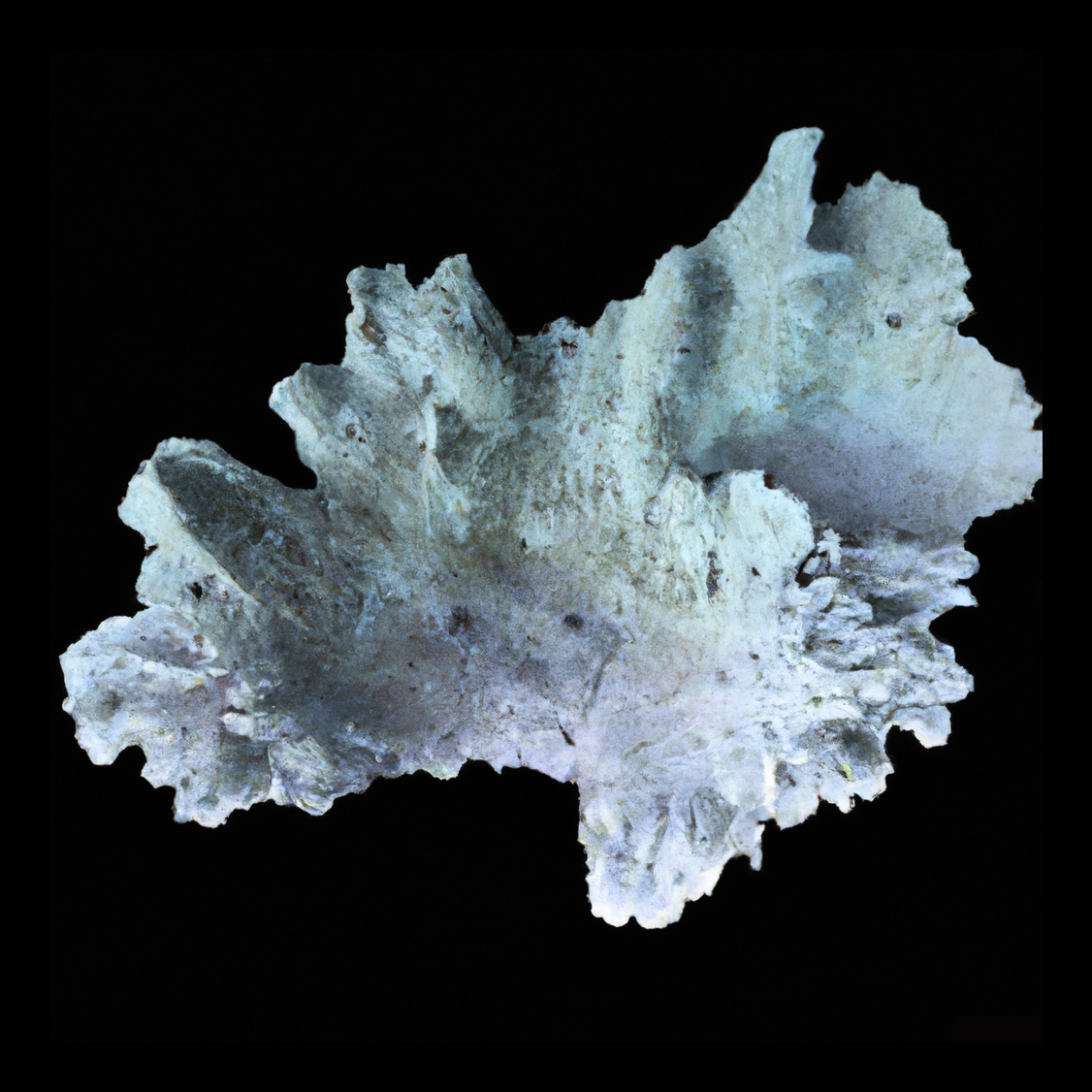

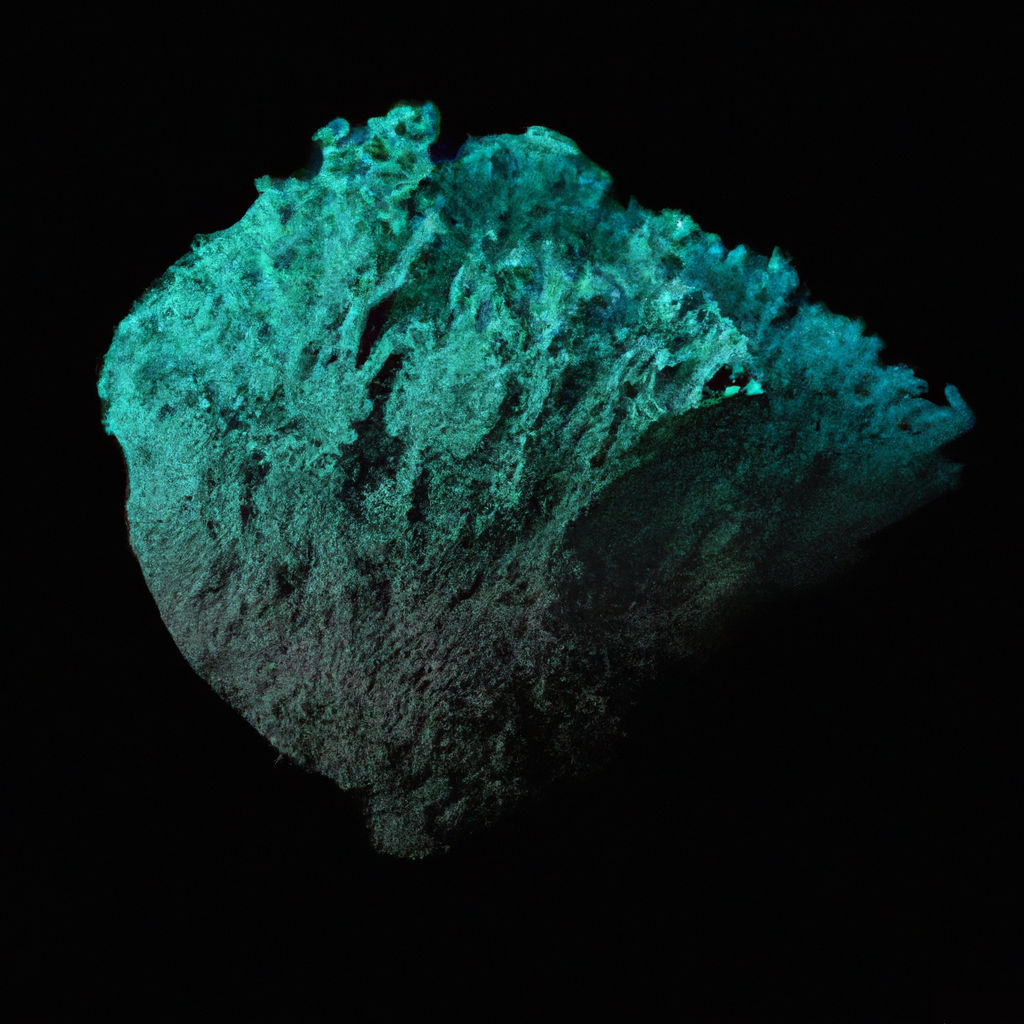
PUH-POWEE - list of works:
1. Nudibranche (2024), 49cm x 38cm, Alexa Seligman, AI generated photographic print on Fujfilm paper (above, top of page)
2. Process Fern (2024), 29cm x 20cm, Alexa Seligman, hand made botanical print using oil-based non-toxic ink on archival paper
3. Tree House (2024), 29cm x 20cm, Isabel Seligman, hand made botanical print using oil-based non-toxic ink on archival paper (above, row 1/left)
4. Pink Nature (2024), 29cm x 20cm, Xanthe Seligman Carr, hand made botanical print using oil-based non-toxic ink on archival paper (above, row 1/centre)
5. Cherry Twigs (2024), 29cm x 20cm, Isabel Seligman, hand made botanical print using oil-based non-toxic ink on archival paper
6. Red Carnelian (2024), 29cm x 20cm, Alexa Seligman, AI generated photographic print on Fujfilm paper (above, row 1/centre)
7. Milk Crystal (2024), 49cm x 38cm, Alexa Seligman, AI generated photographic print on Fujfilm paper (above, row 2/left)
8. Moon Poo (2024), 5cm x 5cm, Alexa Seligman, photographic print on Fujifilm paper of a slime mould Enteridium lycoperdon or 'moon poo', found in Wormholt park, London W12, March 2024 (below, centre)
9. Lichen Planet (2024), 5cm x 5cm, Alexa Seligman, AI generated photographic print on Fujifilm paper
Framed prints can be purchased in person from Wild Thyme, London W12 or can be ordered online. Please enquire, including details of your preferred dimensions, via the contact form here.
Enteridium lycoperdon, Wormholt Park, London
*Note on the word 'puhpowee' and the Potawatomi language, by Robin Wall Kimmerer, citizen of the Potawatomi Nation, Botanist and Author, (from Braiding Sweetgrass, 2013):
"My first taste of the missing language was the word Puhpowee on my tongue. I stumbled upon it in a book by the Anishinaabe ethnobotanist Keewaydinoquay, in a treatise on the traditional uses of fungi by our people. Puhpowee, she explained, translates as “the force which causes mushrooms to push up from the earth overnight.” As a biologist, I was stunned that such a word existed. In all its technical vocabulary, Western science has no such term, no words to hold this mystery. You’d think that biologists, of all people, would have words for life. But in scientific language our terminology is used to define the boundaries of our knowing. What lies beyond our grasp remains unnamed.
In the three syllables of this new word I could see an entire process of close observation in the damp morning woods, the formulation of a theory for which English has no equivalent. The makers of this word understood a world of being, full of unseen energies that animate everything. I’ve cherished it for many years, as a talisman, and longed for the people who gave a name to the life force of mushrooms. The language that holds Puhpowee is one that I wanted to speak. So when I learned that the word for rising, for emergence, belonged to the language of my ancestors, it became a signpost for me.”"
Associated Reading/Listening:
Braiding Sweetgrass (2013) and Gathering Moss (2003), Robin Wall Kimmerer
The Mushroom at the End of the World (2015), Anna Tsing
Creaturely Poetics (2011), Anat Pick
Dark Room (2023), Garry Fabian Miller
A wider selection of prints to those exhibited is also available online - please get in touch via the contact form here.
